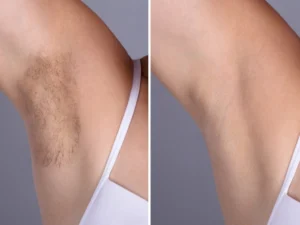How to Clean and Maintain Your Tarpaulin Sheets
Introduction
Let’s face it—tarpaulin sheets are the unsung heroes of outdoor living, construction work, and countless other scenarios. Whether you’re using them to protect your garden tools, cover vehicles, or keep your camping gear dry, these heavy-duty sheets endure a lot. But here’s the deal—if you’re not cleaning and maintaining them properly, you’re throwing money down the drain. And let’s be honest, nobody likes replacing a tarp that should’ve lasted years.
In this detailed guide, you’ll learn everything you need to know about how to clean and maintain your tarpaulin sheets like a pro. From understanding different materials and stain removal techniques to insider tips for long-term care, this guide covers it all. Stick around, because your tarpaulin’s lifespan might just double after reading this.
Understanding the Different Types of Tarpaulin Sheets
Before diving into the cleaning hacks, it’s important to know what kind of tarpaulin you’re dealing with. Not all tarps are created equal. Their material affects how you clean and maintain them, so here’s a quick breakdown:
PVC Tarpaulins
These are strong, waterproof, and resistant to tearing. They’re commonly used in industrial and commercial applications. While durable, they need proper care to avoid cracking or becoming brittle over time.
Canvas Tarpaulins
Canvas tarps are breathable and absorbent, which makes them great for covering equipment or goods that need ventilation. However, they’re more susceptible to mold and require thorough drying.
Polyethylene Tarpaulins
One of the most commonly used tarps for general purposes. Lightweight yet waterproof, they are easy to clean but can become brittle with excessive sun exposure.
Mesh Tarpaulins
Designed for applications that require airflow, mesh tarps are great for hauling debris or as shade covers. Cleaning them involves more careful scrubbing due to their porous nature.
Understanding your tarp type sets the stage for how to best care for it. Different materials require different tactics, so always check the label or manufacturer’s notes before proceeding.
Tools and Materials Needed for Cleaning Tarpaulin Sheets
So, you’re ready to give your tarp a good clean. Great! But don’t just grab a random detergent and start scrubbing. Using the right tools makes a world of difference in maintaining the sheet’s quality and longevity.
Essential Cleaning Tools
- Soft-bristled brushes (avoid wire brushes!)
- Microfiber cloths or soft sponges
- Garden hose with a spray nozzle
- Buckets for soapy water and rinse water
Recommended Cleaning Solutions
- Mild dish soap or detergent
- Vinegar and baking soda (for natural cleaning)
- Specialized tarp cleaners (for stubborn grime)
Avoid bleach unless the manufacturer explicitly says it’s safe. Harsh chemicals can degrade the tarp’s material or waterproof coating.
Safety Equipment
- Rubber gloves
- Eye protection (especially when using stronger cleaners)
- Face mask if using chemical-based products
Preparation is key—having these tools on hand ensures that cleaning goes smoothly and doesn’t end up damaging your tarp.
Step-by-Step Guide to Cleaning Tarpaulin Sheets
Okay, now for the good stuff—cleaning! Whether it’s covered in mud from a stormy campout or just gathering dust in the garage, here’s how you bring it back to life:
1. Pre-Cleaning Preparations
- Shake Off Debris: Take the tarp outside and shake it thoroughly to remove loose dirt, leaves, or any critters making it their home.
- Lay It Flat: Spread it out on a clean surface like concrete or grass.
- Inspect for Damage: Look for tears, mold, or brittle spots. Address those during or after cleaning.
2. How to Hand Wash Tarpaulin Sheets
- Mix Mild Soap in Water: Use lukewarm water and a gentle detergent.
- Scrub Gently: Use a soft brush to scrub both sides of the tarp.
- Rinse Thoroughly: Hose it down to ensure no soap residue remains.
- Repeat for Heavily Soiled Areas: Don’t rush—multiple passes may be needed.
3. Pressure Washing: When and How
- Use on Durable Tarps Only: Ideal for PVC or poly tarps.
- Set to Low Pressure: High settings can tear the material.
- Keep a Safe Distance: About 2–3 feet away is usually safe.
4. Drying Tips to Prevent Mold and Mildew
- Air Dry Only: Never use a dryer.
- Hang or Lay Flat in Sunlight: Sun kills bacteria and helps drying.
- Avoid Folding Until 100% Dry: Moisture can lead to mold.
This method keeps your tarp in peak condition and makes it ready for its next adventure—or job.
Removing Tough Stains from Tarpaulin Sheets
Every now and then, you’ll face a challenge—oil spills, bird droppings, rust stains—you name it. These aren’t your average dust and dirt problems. But don’t worry, we’ve got some tried-and-tested tricks up our sleeves.
Identifying Common Stains
- Grease and Oil: Usually found on tarps used in automotive or mechanical work.
- Mold and Mildew: Common on stored tarps exposed to moisture.
- Paint and Ink: Accidental spills during DIY projects.
- Rust: Often from metal eyelets or tools left on the tarp.
DIY Cleaning Solutions for Stubborn Spots
- Vinegar + Baking Soda: Great for mildew—apply, scrub, rinse.
- WD-40 for Oil: Spray lightly, let sit, and wipe clean.
- Lemon Juice + Salt: Effective for rust spots—let it sit under the sun.
- Toothpaste: Yeah, the more abrasive types work on ink stains!
When to Use Commercial Cleaners
- Chemical stains and those on industrial tarpaulins require a commercial cleaner that will not damage the tarpaulin.
- Always put the cleaner to the test in a small area before treating the whole tarpaulin.
- Always follow the recommendations of the manufacturer.
Best Practices for Maintaining Your Tarpaulin Sheets
The Best Tarpaulin Sheets Maintenance Practices
After cleaning comes maintenance, which is what prevents your tarp from deteriorating any faster. Consider it the tarp’s wellness regimen, which however is not solely based on being cleaned but more on remaining clean and untouched for a long time.
Regular Inspection Routines
You should be looking over your tarpaulin at least once a month if it is constantly being used or getting hammered by the elements. Here is what to look for:
- Tears or holes—small ones can be patched easily, but if you ignore them, they will grow.
- Faded or brittle spots—these are signs of UV damage or premature wear.
- Loose grommets or rusting—these grommets could rip the fabric in tension.
- Mildew or smell—accusations that the tarp was not dried or stored correctly.
Doing this little monthly inspection allows you to escape a large replacement cost later.
Proper Storage Techniques
Storing your Clear Tarpaulin is as important as cleaning it. Poor storage means the canvas will become susceptible to mold, brittle, and other problems. The following should be kept in mind:
- Always store dry: This is non-negotiable. Even a little dampness can lead to mildew.
- Roll, don’t fold: Folding will cause creasing lines that will eventually crack.
- Keep it off the floor: Don’t store it directly on the concrete floors. Use a shelf or hang it.
- Do not use plastic bags: they need to breathe!
By following these five points, you’re ensuring the tarp remains clean and ready for action whenever you need it.
Repairing Small Tears and Holes
Small tears do not spell the end of a tarp’s life-more likely, with a little use of a patch, it could be almost like new again.
- Use tarp repair tape: These tapes are waterproof, UV resistant, and simple to use.
- Sew and seal: For canvas tarps, stitch and apply a waterproof sealant. This works well.
- Grommet repair kits: Handy if grommets are damaged.
Do make it a point to repair any small damage without any delay; this will prevent it from escalating into something that cannot be repaired.
Seasonally Care Tips
Tarpaulins endure a lot, especially being left outdoors soaking through the changing seasons. Each season poses different challenges, and ensuring that the proper care administered according to the weather should lead to maximizing durability.
Preparing Tarpaulins for Winter Storage
- A good cleaning: Dirt left on tarps can freeze and weaken the material.
- Check for moisture: In cold weather, a little damp spot can aggravate into mold.
- Use silica gel packs: Helps absorb leftover moisture when putting it into containers.
- Avoid direct contact with a concrete or metal surface: These materials will keep upon cold and damage the tarp subsequently.
Maintenance and Usage During Monsoons
Rain can be harsh on those using a tarp either as cover for objects or as a roof. Keep it in shape:
- Regularly drain the pooled water: This reduces stretching and tearing.
- Tighten loose ends: Ripping may occur due to flapping in the wind.
- Check for leaks: After every storm, inspect for seawater seepage.
If you’re using the tarp as a tent or shelter, ensure that seams are sealed and reinforced—leaky seams are the biggest culprits during heavy rainfall.
UV Protection in Hot Climates
Sun exposure is a slow but irreversible killer. Under the influence of UV rays, a flexible tarp will become a brittle sheet.
- Apply the UV protectant spray: This is like sunscreen to your tarp.
- Avoid prolonged sun exposure: Rotate or shade your tarp if stationary.
- Use tarps with built-in UV resistance: especially if you’re in a desert or tropical climate.
With these seasonal care tips, your tarp may be able to brave even the worst weather with ease.
General Mistakes of Tarp Making
There are those things that we do not do in our lives but make a great difference. Even minor mistakes made in tarp care can cause significant damage. Let us dispel some of the most common tarp “non-blunders”.
Harsh Chemicals
Bleach and ammonia cleaners are perhaps the two biggest tarp killers. They may work wonderfully for your bathroom floor or bathtub, but not really for tarps.
- They strip the waterproof coating Response
- Accelerate the breakdown of fabric
- Leave behind residues that attract dirt.
Be Careful not to Fall for these Traps:
- Mild soap or specialized cleaners,
- Ignoring Early Damage
It can begin with a little rip or some mildew-before you know it, the tarp is ruined. You could cultivate the habit of Inspecting before and after use Patching small holes immediately Addressing smells and discoloration early Compound less preventive care costs to getting a new tarp.
The Wrong Way of Folding and Storing
Folding a wet tarp and tossing it into a dark shed? That’s asking for mold and mildew. This is what to avoid.
- Don-t fold tightly if wet;
- Don’t leave in the sun too long before storing.
- Don’t store in airtight plastic without ventilation.
Eco-Friendly Cleaning and Maintenance Options
So for you green solutions freaks (and honestly we all should be these days), the good news is there are also sustainable means by which tarpaulin sheets can be serviced.
Green Cleaning Products:
- Biodegradable soaps: Plant based and soft on materials
- Natural disinfectants: Vinegar and juice from lemons
- Great for lifting grime without toxins: Baking soda
Avoid phosphates and synthetic fragrances-have a tendency of being harsh on the environment and often not worth it.
Sustainable Storage Solutions
Use recycled bins or canvas storage bags Repurpose old crates with ventilation holes storage off-ground to reduce mold risk Bonus: these methods also keep rodents and bugs at bay.
Recycling and Reuse Ideas
your tarp is beyond saving, don’t just toss it..
- Cut and use for garden weed control
- Repurpose for ground covers at picnics
- Use patches for other tarps
Also Read: https://overlypost.com/














Post Comment